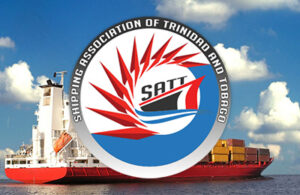
Hayden Alleyne
Past President
Shipping Association of Trinidad and Tobago
(SATT) from 2020 – 2022
Expanding port capacity in Trinidad and Tobago (T&T) is crucial for enhancing the country’s economic competitiveness and supporting its role as a key player in the Caribbean shipping industry. T&T’s two major cargo ports, the Port of Port of Spain and the Point Lisas Industrial Port Development Corporation (PLIPDECO), are pivotal to its trade infrastructure. As global trade continues to grow, T&T must invest in its port infrastructure to accommodate larger vessels and increased cargo volumes. This article explores the strategies for expanding port capacity, the importance of such an expansion, and the potential benefits for the shipping industry and consumers in T&T.
Investment in Infrastructure
One of the primary strategies for expanding port capacity is through substantial investment in infrastructure. Modernizing the Port of Port of Spain and PLIPDECO, and potentially constructing new facilities, can significantly increase capacity. Upgrading port infrastructure involves deepening and widening channels, expanding berths, and enhancing cargo handling equipment. Such improvements can reduce congestion and turnaround times, making T&T ports more attractive to global shipping lines.
Public-Private Partnerships (PPPs)
Public-Private Partnerships (PPPs) offer a viable model for funding and managing port expansion projects. The Port of Port of Spain is currently pursuing a PPP arrangement, aiming to leverage private sector investment and expertise to expedite its development. PPPs can provide the necessary capital while ensuring efficient management and operation of port facilities. Successful PPPs can align the interests of both public and private entities, fostering innovation and operational excellence.
Intermodal Connectivity
Improving intermodal connectivity is essential to maximize the benefits of expanded port capacity. This involves integrating port operations with rail, road, air transport networks, and barges by sea, facilitating the seamless movement of goods not only within Trinidad and Tobago but also between the islands of the nation. Enhancing intermodal connectivity can reduce logistical costs, improve supply chain efficiency, and ensure that goods reach their destinations more quickly. For T&T, this means developing better transport links between ports and key industrial and commercial areas, as well as establishing efficient maritime routes connecting the islands, thus optimizing the utilization of all available modes of transportation.
Facilitating Port Expansion
To facilitate port expansion, T&T needs to adopt a comprehensive and coordinated approach. Key elements include:
Regulatory Reforms: Streamlining regulations and reducing bureaucratic hurdles can attract more investment in port infrastructure.
Stakeholder Collaboration: Engaging with stakeholders, including shipping companies, logistics providers, and local communities, is crucial for successful port expansion projects.
Sustainable Practices: Implementing environmentally sustainable practices ensures that port expansion does not harm the local ecosystem and complies with international standards.
Importance and Benefits
Expanding port capacity in T&T is essential for several reasons:
Economic Growth: Enhanced port facilities can stimulate economic growth by attracting more international trade and investment.
Competitive Advantage: Improved ports can position T&T as a leading transshipment hub in the Caribbean, offering faster and more efficient services.
Consumer Benefits: Increased port capacity can lead to lower shipping costs, reduced prices for imported goods, and a wider variety of products available to consumers.
Conclusion
Investing in port capacity expansion is a strategic imperative for Trinidad and Tobago. By focusing on infrastructure investment, leveraging PPPs, and improving intermodal connectivity, T&T can enhance its port capabilities, particularly at the Port of Port of Spain and PLIPDECO. Such expansion will drive economic growth, enhance the country’s competitive position in the global shipping industry, and deliver significant benefits to consumers. With the right model and coordinated efforts, T&T can successfully expand its port capacity and reap the rewards of a more robust maritime sector.
By Mr Hayden Alleyne
Hayden, is the Past President of the Shipping Association of Trinidad and Tobago from 2020 – 2022. Currently, he is a Maritime and Shipping Consultant.





